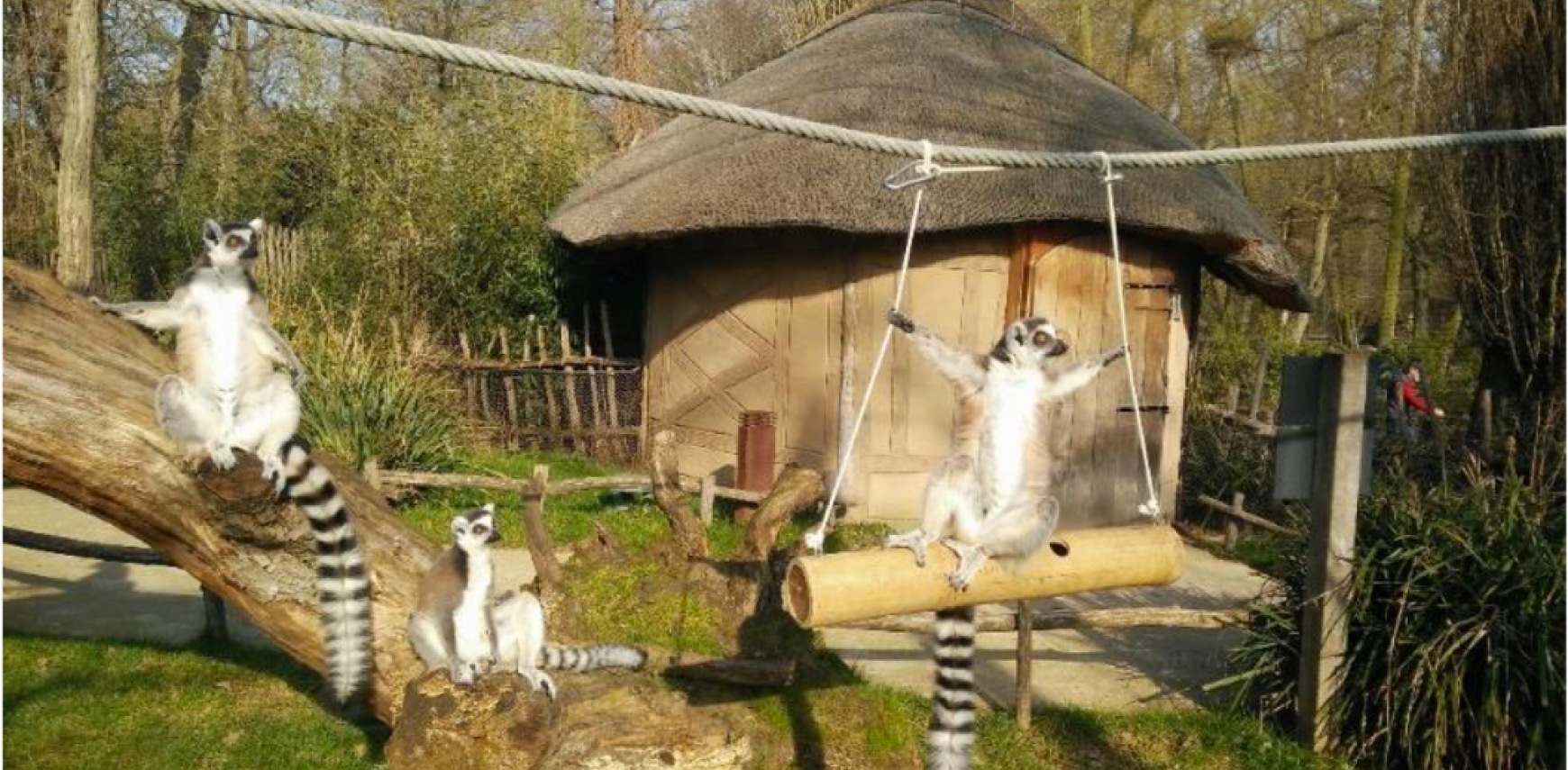Animals don’t care about design
A couple of months ago I did something strange, even to my standards. I went to the ring-tailed lemur enclosure at Planckendael ZOO and asked the visitors: 'If you were a lemur, would you like to live here?'
How to enrich an enclosure?
The life of an animal in a zoo enclosure includes a series of challenges, such as the need to adapt to a limited space, or that they sometime can't express all natural behaviours. But we can enrich their quality of life by providing objects that stimulate their psychological and physical well-being. This is called providing environmental enrichment. For example, you can provide their food in an object that makes it more challenging for them to eat and requires them to show natural behaviours. And that improves their wellbeing.
These objects are called environmental enrichment devices, and they can be natural or artificial in appearance. Wood, rope, and burlap are considered natural-looking. Objects made of PVC, steel or brightly coloured are considered artificial-looking. The animals themselves don’t care what the object looks like, but often zoo management do not want to use artificial-looking objects because they believe that this can negatively influence the visitor experience, especially in naturalistic enclosures.
Animals nor visitors care about how objects look
We asked nearly 400 zoo visitors in Planckendael Zoo what they thought of the ring-tailed lemur enclosure. And we did this while the animals used the same enrichment devices, but in two different appearances: one artificial (a perforated PVC tube with food inside) and one natural (the same tube but made of bamboo). We also observed the animals' behaviour at the same time.
Do you know what we discovered? That animals nor the visitors cared at all about how the enrichment in the enclosure looked. However, regardless of whether the objects were natural- or artificial-looking, they made the animals more active and more visible. And this made the visitors enjoy their visit even more! If you want to read about all the details of our research, you can find our full publication here.

